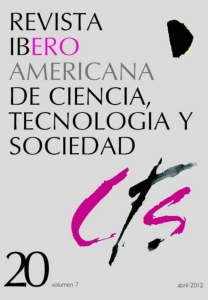Learning from the future
Governing Nanotechnology
DOI:
https://doi.org/10.52712/issn.1850-0013-693Keywords:
risk, danger, anticipatory governance, foresight, futureAbstract
Current scientific and technological developments will undeniably lead to, at a minimum, two results: 1) an unprecedented increase in complexity and uncertainty which will have multiple effects on decision making processes; and 2) due to the increasing presence of new technologies today, the need to develop a new model to manage those uncertainties: the creation of this new model demands going beyond and complementing current risk management models. The main objective of this article is to propose a management model that we call anticipatory governance and that uses future studies (foresight) and intelligence analysis techniques as the tools most adapted to deal with those phenomena. In this way, we not only participate in the still open debate on the distinction between danger and risk, but we also describe what we consider to be the three models of risk management, focusing on our proposal to develop a model based on the anticipation and comprehension of a complex and uncertain future.
Downloads
References
BARBEN, D. et al (2008): “Anticipatory Governance of Nanotechnology: Foresight, Engagement and Integration”, en E. J. Hackett, O., Amsterdamska, M., Lynch, y J., Wajcman (eds.): The Handbook of Science and Technology Studies, Cambridge y Londres,MIT Press y Society for Social Studies of Science, pp. 979-1000.
BERNSTEIN, P. L. (1996): Against the Gods: The Remarkable Story of Risk,John Willey & Sons.
BISHOP, P., HINES, A. y COLLINS, T. (2007): “The current state of scenario development: an overview of techniques”, Foresight,vol. 9, nº1, pp. 5-25.
BOSSO, C. J. (2010): Governing Uncertainty. Environmental regulation in the age of Nanotechnology,Eartscan.
BOURG, D. y SCHLEGEL, J. L. (2001): Parer aux risque de demain. Le príncipe de précaution,París, Seuil.
CALLEJA LÓPEZ, A. (2009): “Ciencia, tecnología e integración social: el proyecto STIR (Sociotechnical Integration Research)”, Argumentos de razón técnica, vol. 12, pp. 157-165.
ELÍAS, N. (1990): Compromiso y distanciamiento. Ensayos de sociología del conocimiento, Barcelona, Península.
FUNTOWICZ, S. y RAVETZ, J. R. (1992): “The Emergence of Post-Normal Science”, en R. von Schomberg (ed.): Science, Politics and Morality, Kluwer Academic Publishers,Dordrecht, pp. 85-123.
GUSTON, H. D. (2011): Anticipatory Governance: AStrategic Vision for Buiding Reflexivity into Emerging Technologies, Tempe, AZ. Disponible en: www.cspo.org/library/year/?action=getfile&file=404§ion=lib.
KARINEN, R. y GUSTON, D. H. (2010): “Toward Anticipatory Governance: The Experience with Nanotecnology”, en M. Kaiser et al (eds.): Governing Future Technologies. Nanotechnology and the Rise of Assessment Regime, Dordrecht, Springer, pp. 217-232.
LÓPEZ CEREZO, J. A. y LUJÁN, J. L. (2000): Ciencia y política del riesgo,Madrid, Alianza Editorial.
MOLAK VLASTA (1997): Fundamentals of Risk Analysis and Risk Management, New York, Lewis Publishers.
MOLES PLAZA, R. J. (2001): Derecho y Calidad. El régimen jurídico de la normalización técnica, Barcelona, Ariel.
MOLES PLAZA, R. J. (2004): Derecho y Control de Internet. La regulabilidad de Internet,Barcelona, Ariel.
NIETZSCHE, F. (2007): Así habló Zaratustra, Madrid, Alianza Editorial.
RENN, O. (2008): Risk Governance: Coping with Uncertainty in a Complex World. London: Earthscan Publications Ltd.
RENN, O. y ROCCO, M. C. (2006b):White paper on nanotechnology risk governance, white paper 2, Geneva, International Risk Governance Council. Disponible en: www.irgc.org.
SERRA, J. (2008): “La prospectiva y la investigación del futuro”, Inteligencia y Seguridad: Revista de análisis y prospectiva, vol. 4, pp. 211-222.
Downloads
Published
How to Cite
Issue
Section
License
Copyright (c) 2024 CC Attribution 4.0

This work is licensed under a Creative Commons Attribution 4.0 International License.
All CTS's issues and academic articles are under a CC-BY license.
Since 2007, CTS has provided open and free access to all its contents, including the complete archive of its quarterly edition and the different products presented in its electronic platform. This decision is based on the belief that offering free access to published materials helps to build a greater and better exchange of knowledge.
In turn, for the quarterly edition, CTS allows institutional and thematic repositories, as well as personal web pages, to self-archive articles in their post-print or editorial version, immediately after the publication of the final version of each issue and under the condition that a link to the original source will be incorporated into the self-archive.











